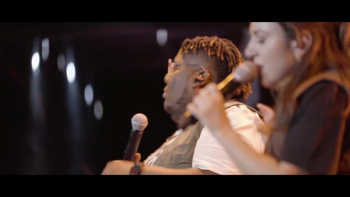Crucifixion of Jesus

Crucifixion of Jesus. Randall Niles explores the historical record surrounding this Roman form of torture and capital punishment.
Crucifixion typically began with a scourging (or flogging) of the victims back. The Romans used a whip called a flagrum, which consisted of small pieces of bone and metal attached to a number of leather strands. The number of blows given to Jesus is not recorded; however, the number of blows in Jewish law was 39 (one less than the 40 called for in the Torah, to prevent an accidental counting error). During the scourging, the skin was ripped from the back, exposing a bloody mass of tissue and bone. Extreme blood loss occurred, often causing death, or at least unconsciousness. In addition to the flogging, Jesus faced severe beating and torment by the Roman soldiers, including the plucking of His beard and the piercing of His scalp with a crown of thorns.
After the flogging, the victim was often forced to carry his own crossbar, or patibulum, to the execution site. The patibulum could easily weigh 100 pounds. In the case of Jesus, the record shows that he may have carried His patibulum the distance of over two football fields. In a weak and tormented state, its no wonder that Jesus needed a great deal of assistance. Once the victim arrived at the execution site, the patibulum was put on the ground and the victim was forced to lie on it. Spikes about 7 inches long and 3/8 of an inch in diameter were driven into the wrists. The spikes would hit the area of the median nerve, causing shocks of pain up the arms to the shoulders and neck. Already standing at the crucifixion site would be the 7-foot-tall post, called a stipes. In the center of the stipes was a crude wooden seat that offered minimal support for the victim. The patibulum was then lifted on to the stipes, and the victims body was awkwardly turned on the seat so the feet could be nailed to the stipes. At this point, there was tremendous strain put
Crucifixion typically began with a scourging (or flogging) of the victims back. The Romans used a whip called a flagrum, which consisted of small pieces of bone and metal attached to a number of leather strands. The number of blows given to Jesus is not recorded; however, the number of blows in Jewish law was 39 (one less than the 40 called for in the Torah, to prevent an accidental counting error). During the scourging, the skin was ripped from the back, exposing a bloody mass of tissue and bone. Extreme blood loss occurred, often causing death, or at least unconsciousness. In addition to the flogging, Jesus faced severe beating and torment by the Roman soldiers, including the plucking of His beard and the piercing of His scalp with a crown of thorns.
After the flogging, the victim was often forced to carry his own crossbar, or patibulum, to the execution site. The patibulum could easily weigh 100 pounds. In the case of Jesus, the record shows that he may have carried His patibulum the distance of over two football fields. In a weak and tormented state, its no wonder that Jesus needed a great deal of assistance. Once the victim arrived at the execution site, the patibulum was put on the ground and the victim was forced to lie on it. Spikes about 7 inches long and 3/8 of an inch in diameter were driven into the wrists. The spikes would hit the area of the median nerve, causing shocks of pain up the arms to the shoulders and neck. Already standing at the crucifixion site would be the 7-foot-tall post, called a stipes. In the center of the stipes was a crude wooden seat that offered minimal support for the victim. The patibulum was then lifted on to the stipes, and the victims body was awkwardly turned on the seat so the feet could be nailed to the stipes. At this point, there was tremendous strain put
Today's Devotional
A Prayer for Safe Travels - Your Daily Prayer - April 17
God knows all things. He knows our fears. He knows our doubts and the mind-numbing reel of thoughts that continue on a loop as we stand in line at security. The Bible promises that with Jesus, we can fight against fear and put our trust in Him.
Top Music Videos
Christian News
The latest news and hot topics trending among Christian music, entertainment and faith life.



 Replay this video
Replay this video





























































































































